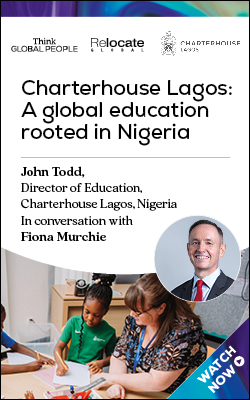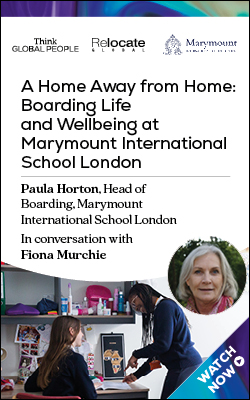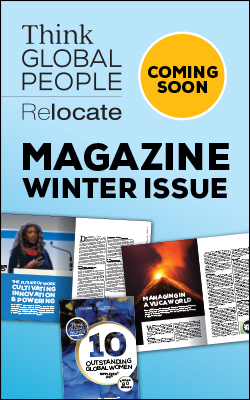Flexibility in mobility policy design
Employers are managing talent in a very different environment today than pre-pandemic. Flexibility has become key to talent attraction and retention. Dr Sue Shortland explains some of the implications for mobility and policy design.

Policy design changes
Global mobility policies, pre-pandemic were becoming increasingly tailored to specific assignment types. This means that organisations have separate policies which they apply to specific situations. The trend was to offer an ever-increasing suite of policies to address different mobility lengths and patterns. For instance, Air Inc.’s Mobility Outlook Survey 2021 reports that organisations had an average of 4.5 policies in 2017; this now stands at 6.2. Organisations might have policies to address short-term and long-term international assignments, one-way transfers, international commuters, rotational assignments, graduate mobility, volunteer assignees, localisation, global cadres, etc.More recently, added into the mix are policies that support remote work (both domestically and internationally), virtual assignments, and locally hired non-nationals. Policies also need to consider payment equity – options include home, host, global, some form of light approach rather than a pure match to home or host terms, and so on. Added into the plethora of policy types, we have also seen the development and inclusion of flexible elements. These have included budget-based lump sums, tiered approaches, and core-flex, including cafeteria style options. As the list of policy types has lengthened so the “pigeon-holing” of assignees into each category starts to become more complicated as to who fits best under each policy; and this has knock-on effects for communication, transparency and equity.Talent objectives
Those responsible for designing and implementing policy have focused on the twin objectives of addressing business needs and flexibility alongside improving the employee experience. It is absolutely crucial that the business meets its objectives – but this relies on the deployment of talent. If the policy that supports this talent objective is unattractive, the goal of moving people to fill specialist and/or shortage roles will not be achievable. It is thus a fine balancing act to ensure that underpinning policies can address both organisational and employee goals.The primary driver for employee mobility is career development. As the CIPD points out internal mobility is beneficial to organisations because it provides a valuable means of responding to employee demands for career growth, thereby helping to develop and retain talent. But set alongside this, it is important to recognise that employees are increasingly seeking customisation of their mobility experience in support of their career objectives.A further organisational talent issue concerns diversity and inclusion – again employers are seeking the talent advantages that flow from a diverse and inclusive workforce. Here too we see an employee perspective that will influence policy design – employees are all individuals with their own different family situations and requirements. To address diversity, policy design needs to encompass the ability to respond to individuals’ needs without each and every request becoming an “exception to policy”. This suggests a needs-based approach to policy delivery.Flexible approaches
It is clear from the above issues that there are potentially conflicting demands on the design and implementation of mobility policies. Success will lie in design and delivery that addresses rapidly changing business requirements as well as employee needs with flexibility but while maintaining equity. Rather than acting as a prescriptive and controlling framework, mobility policy must be more proactive, supportive and tailored in an employee-centric manner.A personalised approach is likely to require technology to support delivery – this can ensure that budgets are not exceeded but that policy elements are available to meet individual circumstances. An example might be the provision of additional flights for children separated from both parents where single parents undertake an assignment; this might be available in place of – or in addition to – provision for home leave. The key to employee satisfaction is to ensure that policy flexibility enables mobility but without assignees needing to justify each and every item they require as an exception to the rule.Read more about this international talent management:
- The future of international mobility
- Remote working: Are the positives of global mobility unravelling?
Assignees do compare what they get with their colleagues. Transparency and equity are crucial for employee buy-in and motivation. Umbrella policies which provide necessary elements for all assignees (immigration and tax compliance are obvious examples) supported by mixes of support provision (booked and delivered by the employer or third party supplier) and self-managed spends on elements personal to the individual’s circumstances could provide a means of combining flexibility with an organisationally managed mobility approach. This could be set within an overall policy frame linked to the type of assignment, or be part of a more general approach to support a range of mobility types via a set of guidelines.
Launch of Permits Foundation’s International Dual Careers Survey 2021 Permits Foundation is delighted to announce the launch of our International Dual Careers Survey 2021. With this timely survey aimed at both global mobility professionals and partners of international employees, we look to capture the views of the widest audience we have ever reached. Permits Foundation hopes that you can help us by taking part! Click here to access the Permits Foundation International Dual Careers Survey 2021
Mobility policies must fulfil the need to ensure both cost efficiency and effectiveness. Budgetary constraints will apply and cost control is still a critical part of mobility’s role. There is a danger that the more flexibility that is built into policy design, the greater the chance for costs to ratchet up. Costs must be accounted for both upfront and on an on-going basis. Technology that can keep account of the elements delivered and their costs set against budgets will be required for a guideline policy and flexible delivery to work in both an equitable and controlled manner.
Structure or guidelines?
The trend towards greater flexibility in policy design and delivery might imply the end of structured mobility policies. It appears as if a pendulum has swung from having more policies addressing different mobility forms, to having a set of guidelines and flexible delivery.This is not the case though. There is still a need in many organisations for a structured approach; it can reflect and maintain organisational culture and can prove to be very successful as part of a talent mobility management strategy. Nonetheless, greater flexibility can operate within a structured framework and so provide opportunities to enhance business objectives in talent deployment and the widening of diversity while at the same time improving the employee experience and organisational reputations as employers of choice. In this way, the organisational mobility brand is improved, and the talent agenda served to best effect.A guideline approach is likely to provide greater flexibility for both the business and the assignees on the move than structured policies. Guidelines will still require transparency such that employees can benefit from equity and thus these should be accessible to employees so that they can understand their content. As with a structured policy approach, effective administration and communication systems will be required to support delivery of guideline elements.Greater emphasis placed on employees choosing and implementing services to support their own mobility requirements can impact on productivity as employees spend their time on this rather than on work tasks. They can also spend inefficiently or on services that are not necessarily in their best interests (for example refusing training in order to spend their budget on other things).Guidelines do therefore need to ensure that direction is given as to what is expected/required to be taken up and support services be made available for employees to use (such as third party specialist help). Flexibility in policy design and delivery must thus ensure that business mobility objectives remain supported.Download the Policy Design series plus Health, Wellbeing and Work Life Balance factsheets
If you have a people-centred approach to driving success across your organisation and understand the importance of wellbeing for talent to flourish, then why not enter the Think Global People and Relocate Awards. There are ten categories to choose from. Join us on 9 June for the results and the Future of Work Festival.
Subscribe to Relocate Extra, our monthly newsletter, to get all the latest international assignments and global mobility news.Relocate’s new Global Mobility Toolkit provides free information, practical advice and support for HR, global mobility managers and global teams operating overseas.
 Access hundreds of global services and suppliers in our Online Directory
Access hundreds of global services and suppliers in our Online Directory
©2025 Re:locate magazine, published by Profile Locations, Spray Hill, Hastings Road, Lamberhurst, Kent TN3 8JB. All rights reserved. This publication (or any part thereof) may not be reproduced in any form without the prior written permission of Profile Locations. Profile Locations accepts no liability for the accuracy of the contents or any opinions expressed herein.







































